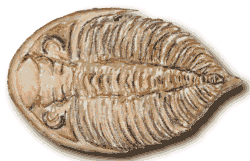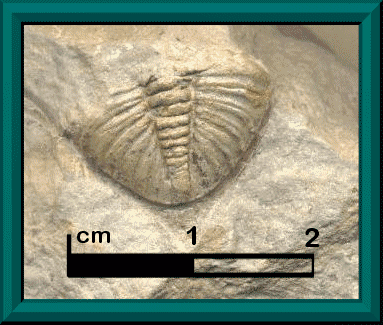Geology / Gallery

Dalmanites Myops (2)
Trilobites are perhaps the most distinctive Palaeozoic fossil. Their prominent compound 'eyes' were the earliest and most advanced visual organ. Living in shallow marine environment principally as scavengers they are often well preserved and locally an abundant fossil. Although they look superficially somewhat similar to present day wood lice there is no actual relationship at all.

Confined to the Silurian (about 40million years of existence before it evolved into a new Dalmanites species) Dalmanites Myops is abundant on Wenlock Edge and particularly in the Ludlow series sediments above the Wenlock series when the sea began to deepen and the reef systems began to dwindle in the colder, muddier water. However this trilobite seemed to have coped well with this. These specimens were found in Ludlow mudstone in Mortimer Forest and the Wenlock Shale at Upper Millchope on the Wenlock Edge (see specimen photograph) both muddy sediments with not a great variety of other life in it. This species is normally found only as the cephalon (head) or pygidium (tail) and not as the whole creature since they shed their exoskeletons periodically, and the bodies would also easily break up into segments after death.
This specimen was kindly photographed for us by Merlin
| Division | Name |
| Phylum | Not yet agreed |
| Class | Trilobita |
| Order | Phacopida |
| Super Family | Dalmanitdae |
Fossil gallery
- Brittle Star : Lapworthia miltoni
- Trilobite : Dalmanites myops
- Crinoid : Eucalyptocrinites decorus
- Gastropod : Poleumita discorus
- Trilobite : Calymene blumenbachi
- Graptolite : Cyrtograptus murchisoni
- Sponge : Ischadites koenigi
- Conodont : Ozarkodina typica
- Brachiopod : Pentamerus oblongus
- Graptolite : Petalograptus minor
- Brachiopod : Chonetes striatellus
- Cystoid : Lepocrinetes quadrifasciatus
- Bivalve : Pteronitella retroflexa
- Graptolite : Monograptus lobiferus
- Gastropod : Platyceras haliotis
- Crinoid : Sagenocrinites expansus
- Brachiopod : Atrypa reticularis
